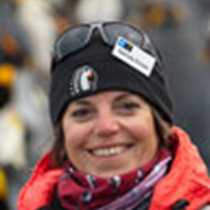Our expedition to the White South has begun in full form. Meeting fellow travellers in Santiago, Chile, seems like it happened long ago. There, we heard the news of an imminent storm on the Drake Passage and that our plans will adapt for the safety and comfort of our navigation south. An early wake-up call, bus ride to the airport, charter flight to Ushuaia, and boarding the National Geographic Orion all rolled like one uninterrupted activity. We were on our way by midday, sailing the mystical Beagle Channel, spotting our first southern seabirds following our ship, like the gracious black-browed albatross.
We are sailing ahead of the storm and into the Antarctic winds, which inevitably bring big swells to the Drake Passage. Sailing through this dynamic body of water is part of our adventures, it’s a rite of passage to get to Antarctica. It will take us two days to cross it and we are committed: the National Geographic Orion is prepared for it and making great progress.
Adaptation has been the word of the day, it implies small actions with personal rewards: finding the best route back to your cabin, getting used to the motion, choosing between being upright or horizontal, comparing stories of seasickness medication, gathering in the lounge for chats and drinks. There is a sense of satisfaction on those who have managed to get over the uncomfortableness of sailing in high seas. Soon, we will all join them as we gain our sea legs.
These navigation days also provide opportunities to learn about the environment we will be visiting soon. The on-board Education Programme started with a presentation from Gabriela (naturalist) who told us about the Yahgan people, the southernmost inhabitants of the world, who lived along the coast of the Beagle Channel up to Cape Horn. Later, Rich (naturalist and photo instructor) gave us an insight to the life of seabirds, particularly of those which we are seen following the ship on our voyage south. David (naturalist) taught us about the physical aspects of Antarctica, and in particular of the many forms of ice covering the White Continent. Before dinner, expedition leader Shaun gave us an update on our progress: tomorrow evening we will be seeing Antarctica.
There will be stories to tell of how we adapted to the motion, how we saw big waves crashing to the side of the ship, how the giant petrels and cape petrels followed our path, gliding gracefully by our side as a presage of the beauty that awaits us. It’s very exciting to be here!







